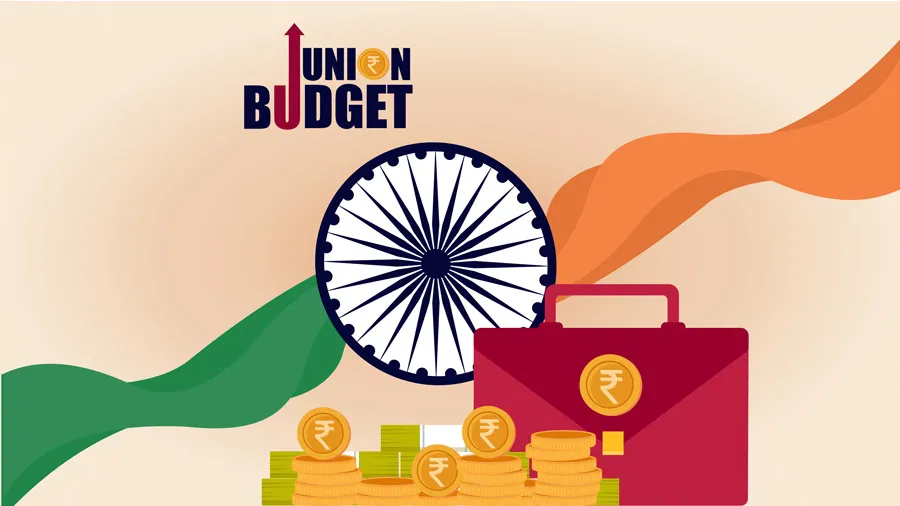India’s 2025-26 Budget: A Growth-Focused Approach

The Indian government has unveiled its 2025-26 Budget, which aims to stimulate economic growth while maintaining fiscal discipline. Finance Secretary Tuhin Kanta Pandey emphasized the Budget’s commitment to fostering growth in a non-inflationary manner. In a recent interview, he discussed the various strategies implemented to address both internal and external challenges facing the economy. This article delves into the key aspects of the Budget, its implications for growth, and the anticipated changes in tax policy.
A Pro-Growth Budget Amid Global Uncertainties
The 2025-26 Budget is designed to be pro-growth, according to Finance Secretary Tuhin Kanta Pandey. He acknowledged the headwinds posed by global uncertainties and internal challenges but expressed confidence in India’s position as the fastest-growing large economy in the world. The Budget aims to maximize growth by addressing both supply-side and demand-side factors.
Pandey stated that the government has taken steps to ensure that growth is accelerated without triggering inflation. This careful balancing act is crucial for maintaining economic stability. The Budget also reflects a commitment to fiscal consolidation, with a target of reducing the fiscal deficit to 4.4% in the coming year. This approach not only aims to stimulate growth but also reassures investors and markets about the government’s commitment to sound fiscal management.
The Finance Secretary highlighted that the Budget has provided the necessary conditions for growth. However, he noted that the decision to cut interest rates lies with the Monetary Policy Committee (MPC). The government has done its part on the fiscal side, and now it is up to the MPC to determine the best course of action to further stimulate the economy.
Tax Relief: A Boost for Consumption and Investment
One of the significant features of the Budget is the introduction of tax relief aimed at boosting consumption and addressing the concerns of the middle class. Pandey explained that while consumption is a key focus, the government is not dictating how taxpayers should utilize their tax savings. Instead, the decision-making power is placed in the hands of the taxpayers themselves.
Taxpayers may choose to consume, save, or invest their additional funds. This flexibility is expected to have a positive impact on the economy. If taxpayers decide to spend, it will increase demand for goods and services. Alternatively, if they choose to save or invest, it will support the banking sector by increasing deposits, which in turn allows banks to extend more credit.
The Finance Secretary emphasized that this approach creates a growth multiplier effect. By allowing taxpayers to make their own decisions, the government is fostering an environment where both consumption and investment can thrive. This strategy is anticipated to lead to a more robust economy, benefiting various sectors and contributing to overall growth.
Comprehensive Support for All Economic Sectors
The 2025-26 Budget does not solely focus on consumption and investment; it also addresses the need for a balanced approach across all sectors of the economy. Pandey stressed that a large economy like India requires all engines to be firing simultaneously. This means that agriculture, manufacturing, and services must all receive attention and support.
To boost agricultural productivity, the government has proposed measures to enhance the productivity of pulses and increase credit limits for farmers. In the manufacturing sector, initiatives are in place to improve production efficiency and spur employment. The Budget also includes provisions to support Micro, Small, and Medium Enterprises (MSMEs) by increasing access to credit and encouraging their participation in exports.
The Finance Secretary noted that the tax policy is designed to support labor-intensive sectors, which are crucial for job creation. By addressing the needs of various sectors, the Budget aims to create a holistic growth environment that benefits all segments of the economy.
Simplifying Taxation: The Upcoming I-T Bill
In addition to the growth-oriented measures, the government is also working on simplifying the tax framework. The proposed Income Tax (I-T) Bill is expected to be presented in Parliament before February 13. This bill aims to streamline the tax process and make it easier for taxpayers to navigate.
Pandey explained that the I-T Bill will not introduce new policies but will instead focus on reforming existing provisions. The current tax framework has become complicated over the years, with more than 4,000 changes since the original act was enacted in 1962. By eliminating redundant provisions and enhancing clarity, the government hopes to reduce litigation and improve compliance.
The Finance Secretary believes that a clearer tax framework will lead to fewer disputes and a more straightforward experience for taxpayers. This initiative is part of the broader goal of creating a conducive environment for economic growth and development.
Observer Voice is the one stop site for National, International news, Sports, Editor’s Choice, Art/culture contents, Quotes and much more. We also cover historical contents. Historical contents includes World History, Indian History, and what happened today. The website also covers Entertainment across the India and World.

